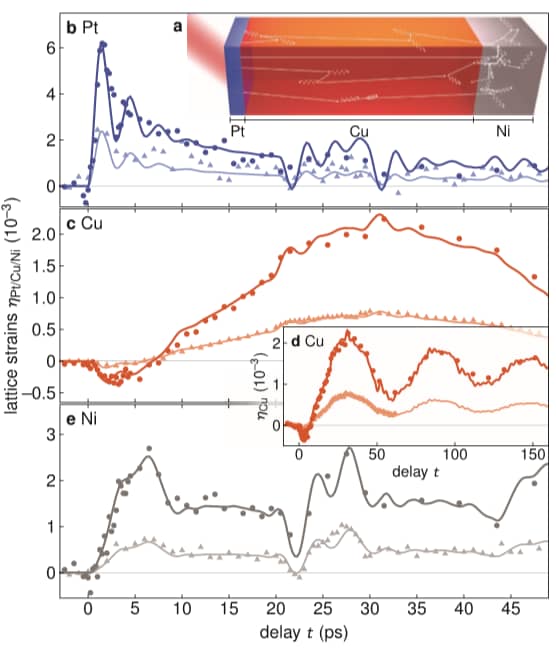New Publication : Heat Transport without Heating?

An Ultrafast X-Ray Perspective into a Metal Heterostructure
When the spatial dimensions of metallic heterostructures shrink below the mean free path of its conduction electrons, the transport of electrons and hence the transport of thermal energy by electrons continuously changes from diffusive to ballistic. Electron–phonon coupling sets the mean free path to the nanoscale and the time for equilibration of electron and lattice temperatures to the picosecond range. A particularly intriguing situation occurs in trilayer heterostructures combining metals with very different electron– phonon coupling strength: Heat energy deposited in few atomic layers of Pt is transported into a nanometric Ni film, which is heated more than the Cu film through which the heat is released. Femtosecond pump-probe experiments with hard X-ray pulses provide a layer-specific probe of the heat energy. A purely diffusive two-temperature model with increased thermal conductivity of hot electrons excellently reproduces the observed signals from all three layers. At the time when the Ni lattice is maximally heated, no significant heat has entered the Cu lattice. This phenomenon would be enhanced in thinner layers where ballistic transport dominates. In this context it is shown that purely diffusive transport can lead to a linear time-to-length dependence that must not be misinterpreted as ballistic transport.
Jan-Etienne Pudell, Maximilian Mattern, Michel Hehn, Grégory Malinowski, Marc Herzog, and Matias Bargheer
Adv. Funct. Mater. 2020, 2004555


